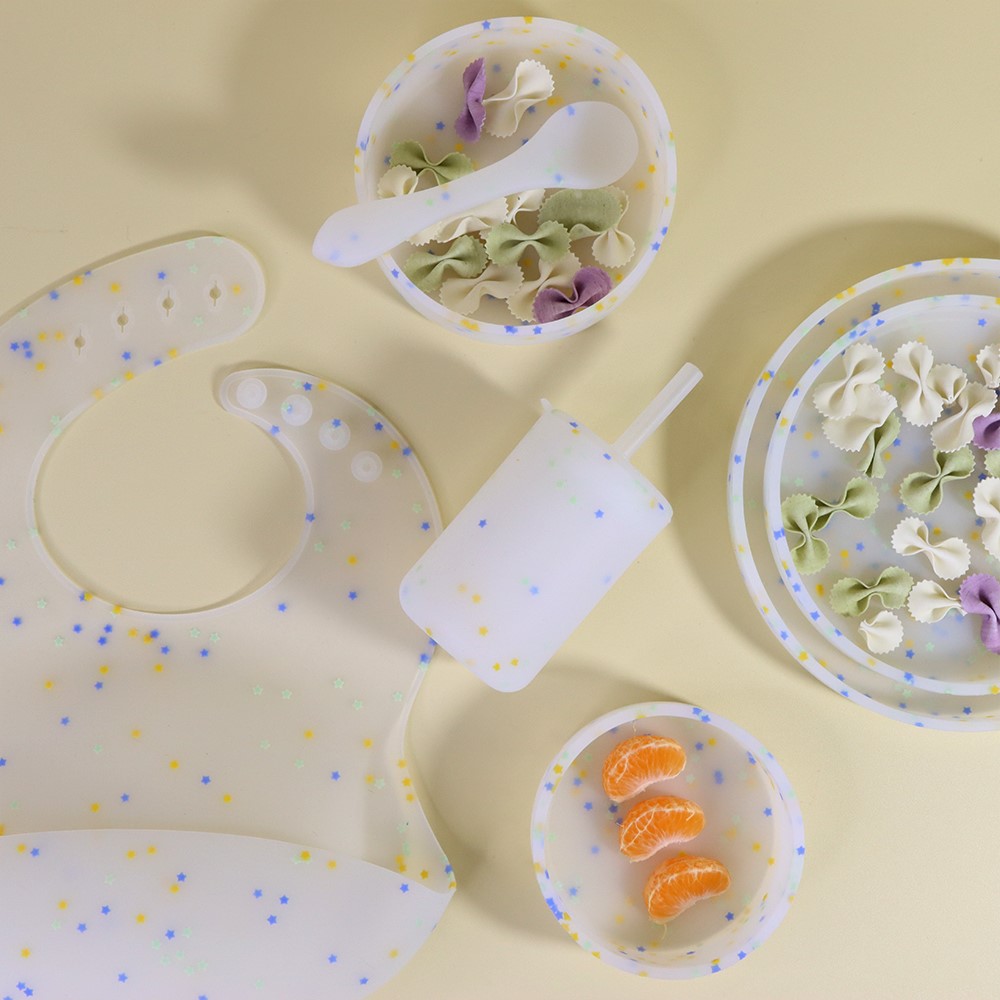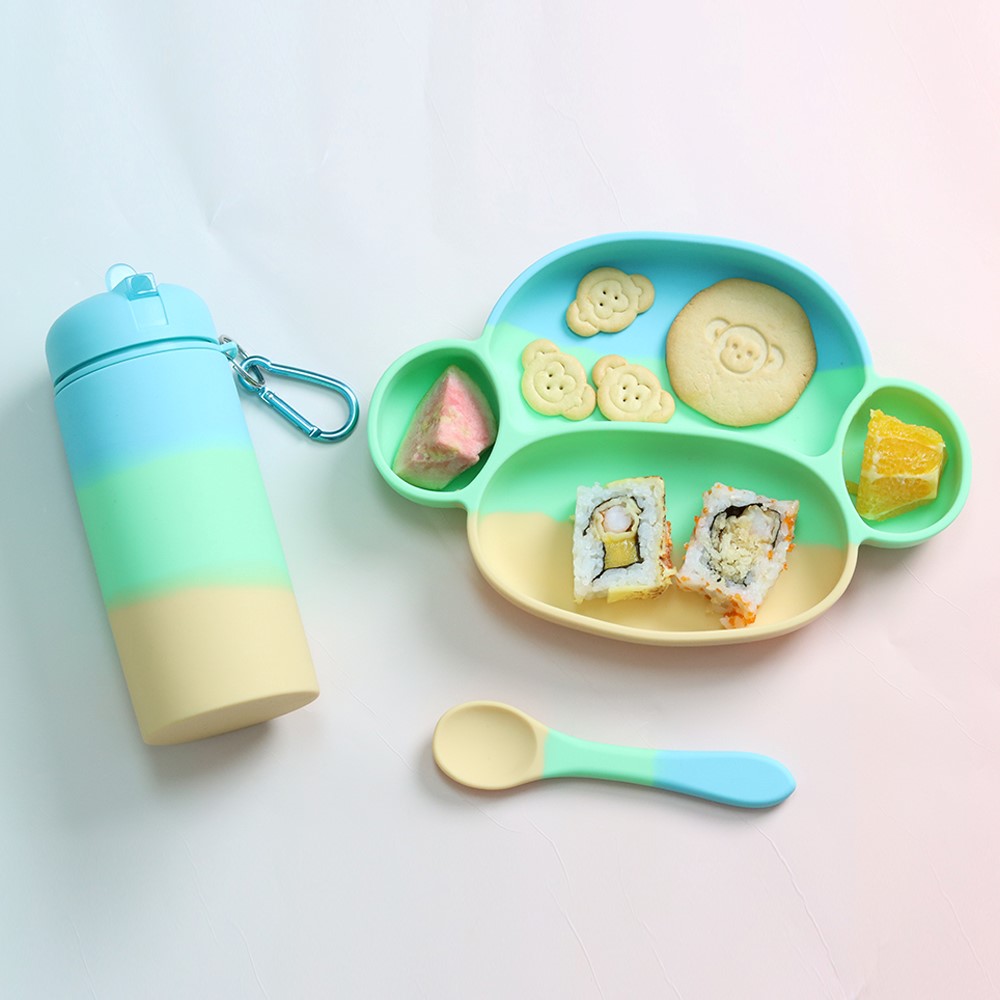Contenido
As your little one transitions from breastmilk or formula to solid foods, the right tools become essential. This is when a custom feeding kit can make all the difference. Typically, babies start showing interest in solid foods around six months of age. At this stage, introducing a feeding kit not only simplifies mealtime but also supports their development.
Benefits of Using a Feeding Kit
1. Safety: The products in these kits are often made from safe, non-toxic materials like food-grade silicone, stainless steel, or bamboo, ensuring the safety of the child.
2. Fostering Independence: Specially designed spoons and forks in the kit can help babies learn to feed themselves, promoting self-care skills.
3. Reducing Mess: Suction bowls and plates included in the kit can stick to the surface, minimizing food splatter and mess during feeding.
4. Ease of Cleaning: Many feeding tools are designed to be easy to clean, with some dishwasher-safe for added convenience for busy parents.
5. Educational Value: Using different feeding tools helps babies learn various eating skills, such as holding, scooping, and chewing.
6. Multifunctionality: Some feeding kits also include containers for storing and carrying food, making them suitable for on-the-go use.

A baby feeding kit is a practical companion for parents during their child’s growth, not only improving feeding efficiency but also providing a pleasant eating experience for the baby.
Types of Feeding Kits
Baby feeding kits come in a variety of types, each designed to support different stages of a baby’s feeding journey and make the feeding process easier for parents. Here are some common types of baby feeding kits:
1. Comprehensive Feeding Sets: These kits include a range of items such as bowls, spoons, plates, cups, and sometimes even bibs, all designed to cater to a baby’s feeding needs. They often feature items that are easy to clean and made from baby-safe materials like food-grade silicone.

2. Starter Kits for New Parents: These kits are designed to guide new parents from the very beginning, often including essentials like baby food containers, spoons, and a measurement scoop. They may also include recipes and guides for preparing nutritious meals.
3. Training Utensils Sets: Specifically designed for babies who are learning to self-feed, these sets often include spoons and forks with ergonomic handles that are easy for little hands to grip. They may also be made from soft materials like silicone to be gentle on babies’ gums.
4. Suction Bowls and Plates: To minimize mess during meal times, feeding kits may include bowls and plates with suction bottoms that stick to the surface, preventing them from being easily moved or flipped over by the baby.
Tips for Using Feeding Kits
– Introduce Gradually: Start with simple spoons and bowls before moving on to more complex items like bento boxes.
– Monitor Closely: Always supervise your child during mealtime, especially when introducing new feeding tools.
– Clean Regularly: Wash the kit after each use to maintain hygiene.
– Adjust as Needed: As your baby grows, switch to larger or more complex kits that suit their developmental stage.
By choosing a custom feeding kit from our silicone factory, you’re investing in a versatile tool that will support your baby through each step of their feeding journey.
At JEWELIVES, we specialize in crafting custom feeding kits that cater to specific needs. Whether you require a personalized design or specialized features, our team works closely with you to create the perfect kit. Our expertise in silicone ensures that every product is durable, safe, and of the highest quality.


